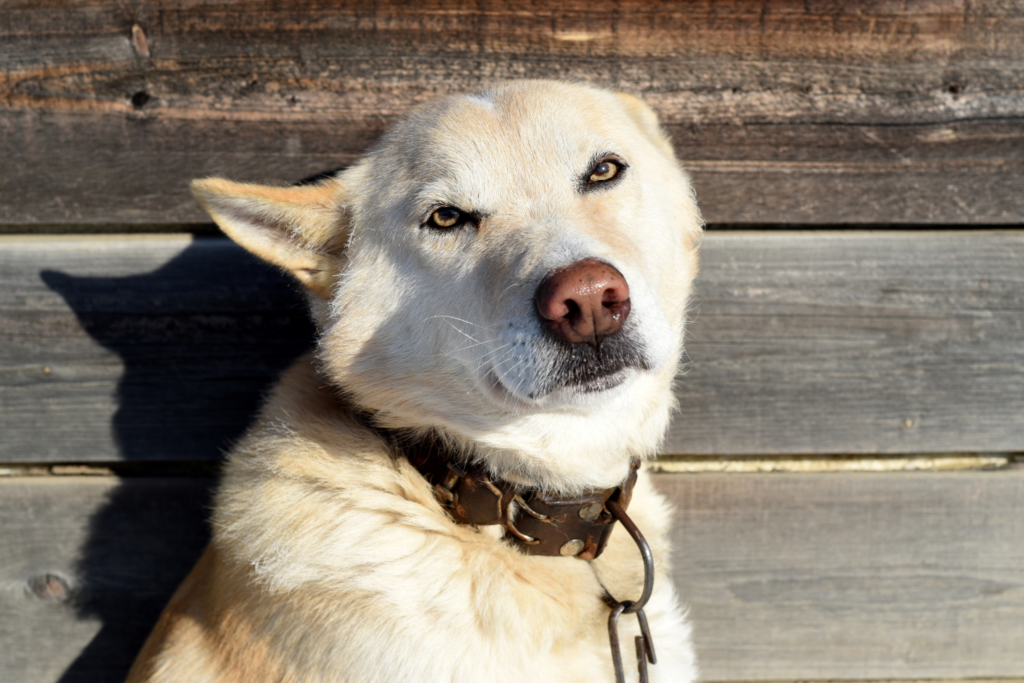We love talking to our dog friends, but they never talk back. And yet we see dog owners understanding what their dog wants or trying to convey. It is not a secret communication system; parents simply understand their dog’s body language. It is not a hidden fact that dogs express all their emotions and communicate primarily through their body language. And understanding their various postures and behaviors can help us recognize their needs, wants, and feelings.
Most Indians have a general idea of their dog’s body language. Growling is not a friendly gesture, whereas a dog with a wagging tail certainly wants to play. However, Jaldee Vets brings thorough research on a dog’s body language to create awareness on a broad spectrum.
5 Common Dog Body Language Cues
Tail Position
A dog’s tail position strongly indicates its mood and intentions. A wagging tail means a variety of emotions, such as excitement, happiness, and friendliness. On the contrary, a high stiff tail indicates aggression. However, it can specify alertness or confidence if it isn’t stuffy. It is important to remember that every dog is unique. And tail positions should always be read in the context of the situation and the dog’s overall body language.
People may sometimes not understand a dog’s tail position and can find themselves in hazardous situations. It is one of the most given dog body language people must learn for their good.
Ear Position
Every breed has a different ear structure, but their positioning indicates the same behavior. A dog’s ear position can provide important information about its mood and intentions. Someone who knows the basics about dog body language knows that flattened dog ears against the head indicate fear and aggression. In such a situation, there are high chances it may attack. When the ears are forward, the dog is curious about something. Another common ear position is one ear forward and one ear back. It can be a sign of relaxation and playfulness.
As with tail positions, ear positions can also vary from breed to breed and highly depends on the dog’s nature.
Eye Contact
Eyes say a lot. And let me tell you, our beloved canines can convey a lot through their eyes. Eye contact is an essential aspect of a dog’s body language. Direct eye contact can be dangerous as it screams aggression and dominance. Most dogs are known not to maintain eye contact with humans. Therefore, one must stay alert if a dog does so. On the other hand, we have a cute phrase called “puppy eyes.”
Dogs tend to say a great deal through their eyes. It is only upon us to understand them. We instantly realize when they want something and look at us with starry eyes.
Body Posture
We have long discussed how their tails and eyes convey millions of messages. But what about their body and behavior? A dog’s body posture can reveal much about what it is thinking or planning to do. A relaxed body often indicates that the dog is comfortable and content. However, the one noticeable body posture is crouching. When a dog crouches low to the ground, it is a sign of fear, submission, or preparation to attack.
Talking about cuddly behavior, when a dog rolls onto its back and exposes its belly, it can signify submission or request for affection and attention.
Vocalizations
Vocalization is the closest dogs get to speaking and expressing themselves. And if you have a misconception that dogs only bark, you are wrong. Various vocalizations include barking, howling, growling, and whining. And each indicates a different mood. While people consider barking dangerous, growling is more of an ominous sign. Barking can be due to various reasons like alerting their owners or expressing anxiety or excitement.
When a dog whines, it is generally trying to get its owner’s attention due to anxiety, excitement, nervousness, or other emotions.
Dogs communicate with their parents in all ways possible. And we live in a society where humans try to understand their fur babies. However, one must note that every pet is different, and a dog’s body language can vary depending on breed, individual personality, and situation. Humans should learn to respect dogs’ personal space and boundaries.

